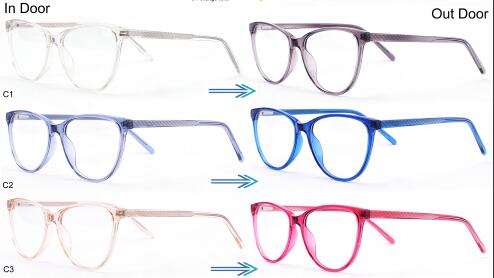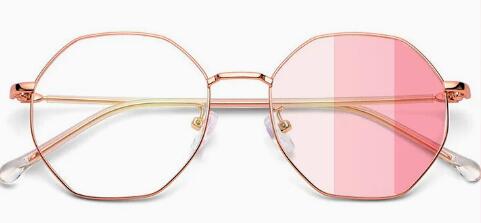

The colour-changing lenses of sunglasses contain millions of molecules of certain substances such as silver chloride or silver halide. In the absence of ultraviolet light, visible light, a common component of artificial light, can penetrate these molecules. But when exposed to the sun's ultraviolet rays, these molecules undergo a chemical process that changes their shape. The new molecular structure absorbs some of the visible light, which darkens the lens. The number of molecules that change shape changes with the intensity of the UV light.

When you go indoors, away from UV radiation, there will be a corresponding chemical reverse change. When suddenly removed from ultraviolet light, these molecules quickly revert to their original structure, losing their ability to absorb light. Whether it's positive change or negative change, the whole process happens very quickly.

In Corning's PhotoBrown and PhotoGrey products from the 1960s, the lenses were made of glass, with molecules distributed evenly throughout the lens. The problem becomes apparent when this method is used in prescription glasses, because the thickness of different parts of the prescription lens can vary, and slightly thicker areas can appear darker. But with the increasing popularity of plastic lenses, a new method has been developed. By soaking the plastic lens in a chemical tank, the discoloured molecules will be absorbed into the plastic lens to a depth of about 150 microns. The new method is significantly better than simple coating processes, in which the discoloured molecules are only five microns thick, which do not provide enough molecules to darken the lens. Transitions, a leader in the color-changing lens industry, has popularized this plastic lens adsorption process.
Thanks for reading.
Sophie yang
004@mikeeyewear.com